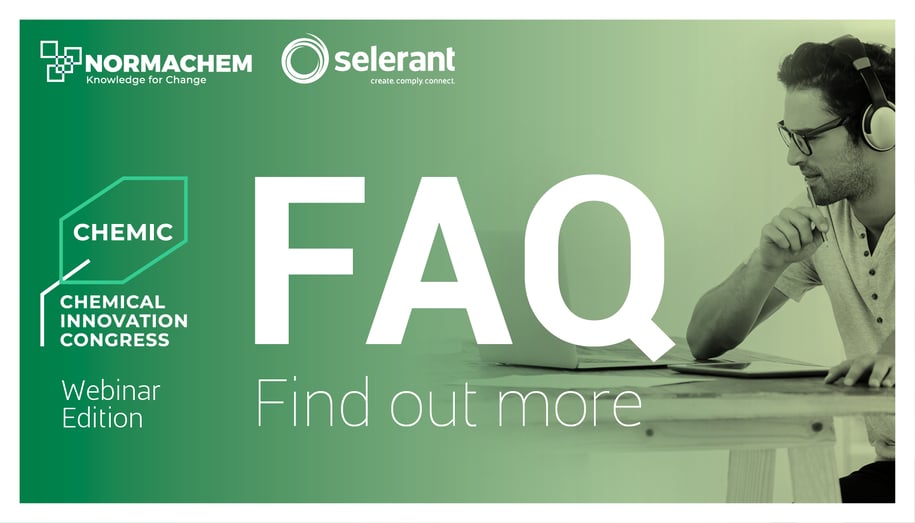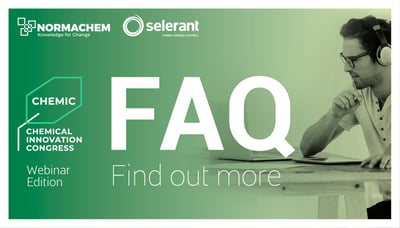
Europe and Annex VIII: FAQs from Chemic webinar
Posted By:
Trace One
 Following the CHEMIC webinar, hosted in collaboration with Normachem and covering some of the most pressing European regulatory obligations and their aspects, we found useful to gather the most frequently asked questions to cover some of the less clear aspects of Annex VIII and the EU declaration, from the current implementation status of Annex VIII in the various Member States to more technical aspects.
Following the CHEMIC webinar, hosted in collaboration with Normachem and covering some of the most pressing European regulatory obligations and their aspects, we found useful to gather the most frequently asked questions to cover some of the less clear aspects of Annex VIII and the EU declaration, from the current implementation status of Annex VIII in the various Member States to more technical aspects.
Here are some of the most frequently asked questions:
My mixture has been already notified to the national appointed body (e.g. Italian ISS): does it has to be notified according to Annex VIII?
Importers and downstream users which have already notified hazardous mixtures to the national appointed bodies according to Article 45 of CLP Regulation before the compliance dates established by Annex VIII do not have to forward the notification to ECHA before the end of the transional period. However, if said notification needs to be updated during the transitional period (e.g significant change in the composition or change in the classification), a new notification will be required and it must meet Annex VIII requirements.
In any case, for what concerns Italy and most of the Member States, we are awaiting the publication of national measures that will further clarify the implementation of Annex VIII: therefore, importers and downstream users should continue to notify their mixtures according to national legislations until December 31st 2020.
For further information regarding the Trace One solution for the notification to Istituto Superiore di Sanità (Italy’s National Institute of Health), use the following link.
How to manage MiMs purchased from different suppliers?
The issue regarding raw materials with composition not fully known (“MiM”) purchased from different suppliers is known to ECHA: at the current state of Annex VIII, a MiM can be identified just by one UFI code and/or supplier.
The European Commission is working on a solution for this topic: it would consist in the introduction of ICG (Interchangeable components), giving the possibility to include a “group” of MiMs, each one identified by its own UFI code and/or supplier.
Currently, this is only a solution proposal. Further details will be available with the official publication of the second amendment of Annex VIII, expected in the second half of 2020.
For further details concerning the provisional text of the second amendment of Annex VIII, use the following link.
Can I generate differents UFI codes for products with the same composition but different trade names?
The UFI code is strictly linked to the composition of the product: according to the assignment criteria, two products with different compositions cannot have the same UFI code. However, Annex VIII allows the generation of different UFI codes for products with the same composition but with different trade names.
A non-hazardous mixture that has supplemental labelling information EUH (e.g. EUH210, EUH208), has to be notified according to article 45?
According to Annex VIII, mixtures classified for health or physical hazards need to be notified to European poison centres: therefore, the obligation according to Article 45 of CLP does not apply to non-hazardous mixtures. Supplemental statements according to Part 2 of Annex II to CLP Regulation (e.g. EUH210 — «Safety data sheet available on request») do not represent hazardous statements since they are additional labelling elements: accordingly, non-hazardous mixtures with this kind of EUH statements are not subject to Article 45.
Nonetheless, it is always possible to submit voluntary notifications.
For further details about the Trace One solution on Annex VIII, visit the following link or contact our Customer Service at EU-customer-service@selerant.com.
For more information regarding the application of the Annex VIII criteria, we suggest consulting the ECHA guidance on Annex VIII, available at the following link.
Newsletter 133